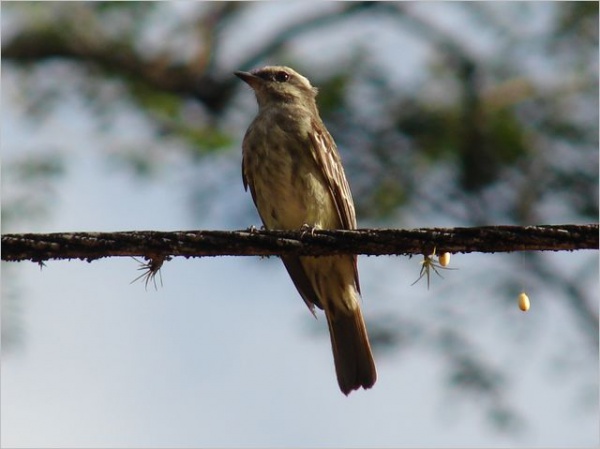Facts About Piratic flycatcher
The piratic flycatcher, a fascinating passerine bird from the genus Legatus, has an unusual approach to nesting. Rather than constructing its own nest, it commandeers the nests of other birds, such as the yellow-rumped cacique or the crested oropendola. This bird inhabits regions from southern Mexico down to Bolivia and Argentina, with some populations even migrating to Central America and Trinidad.
For nesting, the female piratic flycatcher lays up to four eggs in the appropriated nest. She incubates these eggs for approximately 16 days until they hatch. Thereafter, she tends to the chicks for an additional 18 to 20 days.
Physically, piratic flycatchers are relatively small. An adult measures about 15 cm in length and weighs approximately 23 grams. They possess plain brown upperparts with white-edged flight feathers. One of their distinguishing features is their facial markings, which include a long whitish stripe above the eyes and a dusky mask running through the eyes. Their underparts are whitish, accented with light yellow and some brown streaking on the breast and flanks. Their call is notable, resembling an upslurred "weeEEE" or a repetitive "weep weep weep."
Piratic flycatchers primarily consume fruit, but they also catch insects to feed their young. They are typically found in savannahs and semi-open areas with large trees, often perching high to scout for their next meal.

 Guatemala
Guatemala